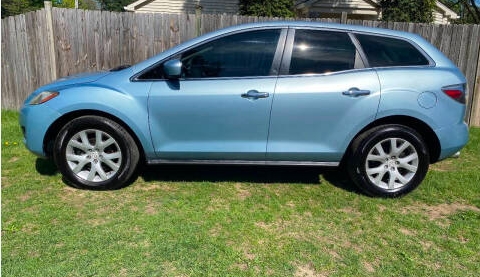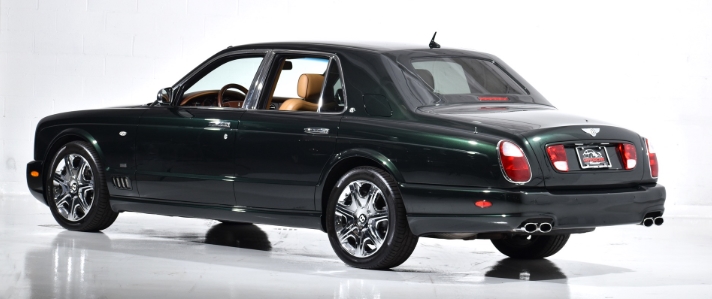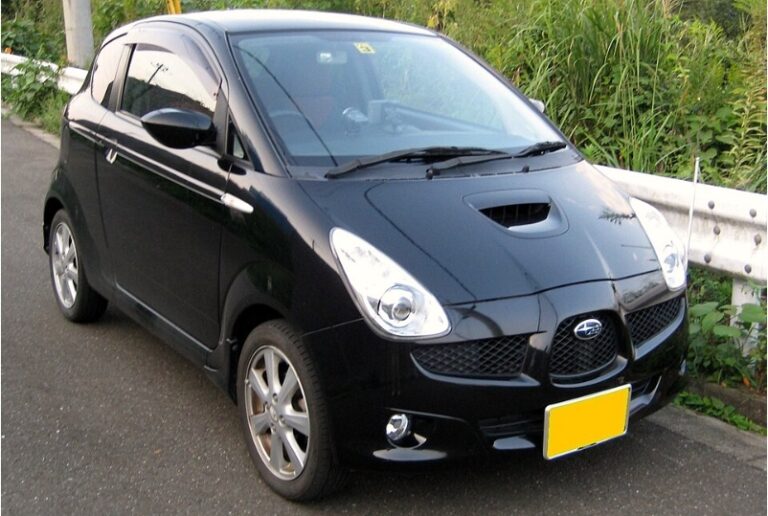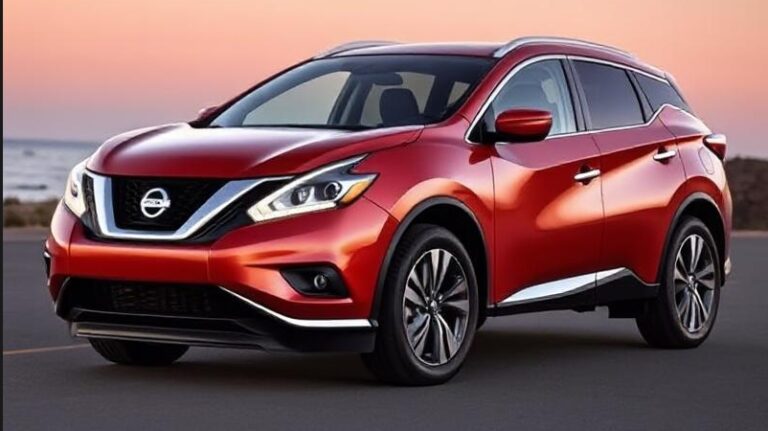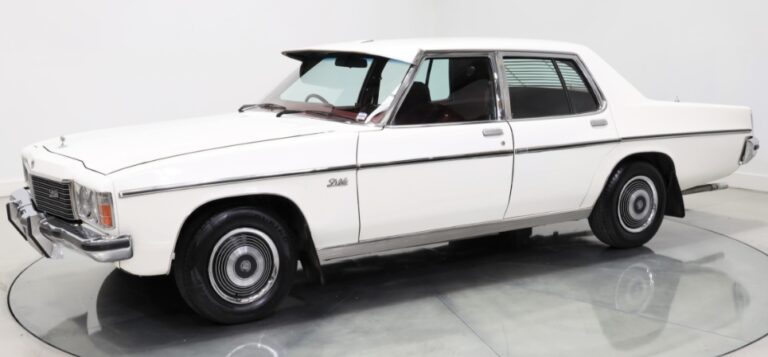The Bold Experiment: Charting the Evolution of the Mazda CX-7
In the mid-2000s, the automotive landscape was undergoing a seismic shift. The crossover SUV, once a niche concept, was exploding in popularity, rapidly displacing traditional sedans and minivans as the family vehicle of choice. The market was flooded with practical, sensible, and often, uninspiring options from major players like Toyota and Honda. Into this sea of beige utility, Mazda, a company built on the ethos of “Zoom-Zoom,” prepared to launch a vehicle that dared to be different. This wasn’t just another crossover; it was a sports car on stilts, a bold experiment that prioritized driving pleasure over outright practicality. This is the story of the Mazda CX-7.
Genesis: The MX-Crossport Concept and a Daring Vision
The first glimpse of what would become the CX-7 came at the 2005 North American International Auto Show in Detroit. Mazda unveiled the MX-Crossport concept, a stunningly sleek and athletic design study that broke from the boxy, two-box mold of its contemporaries. With its aggressively raked windshield, muscular fender flares, and flowing lines, it looked more like a sports coupe than a family hauler. The public and critical reception was overwhelmingly positive, and Mazda greenlit the project for production with remarkably few changes.
Built on a unique platform amalgamating components from the sporty Mazda3, the versatile Mazda5, and the larger Mazda MPV, the CX-7 was engineered from the ground up to deliver on the concept’s dynamic promise. Mazda’s goal was clear: to create a “sports crossover” that would appeal to drivers who needed the space and all-weather capability of an SUV but refused to sacrifice the engaging driving experience they cherished.
The Debut: 2007-2009 – Turbocharged Ambition
The production Mazda CX-7 officially launched for the 2007 model year, arriving in showrooms in the spring of 2006. It retained the MX-Crossport’s dramatic styling, immediately setting it apart from the competition. But its most significant differentiator was hidden under the hood.
The heart of the early CX-7 was the MZR 2.3L DISI (Direct Injection Spark Ignition) turbocharged four-cylinder engine. This was not a mundane, economy-focused motor; it was a slightly detuned version of the same fire-breathing engine found in the high-performance Mazdaspeed3 and Mazdaspeed6. In the CX-7, it produced a muscular 244 horsepower and 258 lb-ft of torque. Mated exclusively to a six-speed automatic transmission with a manual-shift mode, this powertrain gave the CX-7 exhilarating acceleration that left competitors like the Toyota RAV4 V6 and Honda CR-V in its dust.
To manage this power, the CX-7 was offered with standard front-wheel drive (FWD) or an optional Active Torque Split all-wheel-drive (AWD) system, which could send up to 50% of the power to the rear wheels when slippage was detected.
For its initial run from 2007 to 2009, the CX-7 was offered in three distinct trim levels:
Sport: The entry-level model was far from spartan. It came impressively equipped with 18-inch alloy wheels, air conditioning, full power accessories, cruise control, a six-speaker audio system with a CD player, and crucial safety features like stability control and a full suite of airbags.
Touring: This mid-tier trim added a significant layer of comfort and luxury. It built upon the Sport’s features by including leather upholstery for the first and second rows, an eight-way power-adjustable driver’s seat, and heated front seats. This became the volume seller, balancing performance with premium amenities.
Grand Touring: Sitting at the pinnacle of the lineup, the Grand Touring model was for the buyer who wanted it all. It added exclusive features like High-Intensity Discharge (HID) xenon headlights, automatic climate control, unique exterior chrome accents, and a premium nine-speaker Bose surround-sound audio system with an in-dash six-disc CD changer. A touchscreen navigation system and a keyless entry/start system were popular options exclusively available on this trim.
The initial reception was strong. Critics lauded the CX-7’s sharp handling, potent acceleration, and head-turning design. It was praised as a vehicle that was genuinely fun to drive. However, this performance-first approach came with compromises. The turbocharged engine had a notable thirst for fuel and, for optimal performance, preferred more expensive premium gasoline. Its sleek, sloping roofline also cut into rear headroom and cargo space, making it less practical than its more upright rivals.
The Mid-Cycle Refresh: 2010-2012 – A Broader Appeal
By 2010, the crossover market had become even more competitive, and customer feedback on the CX-7’s fuel economy and price point had been heard. Mazda responded with a significant mid-cycle refresh for the 2010 model year.
The most noticeable exterior change was the adoption of Mazda’s new corporate “face”—a larger, five-point grille that gave the front fascia a grinning appearance, flanked by revised fog lamp bezels. The interior received a substantial upgrade with higher-quality materials, a redesigned steering wheel with more intuitive controls, and a new multi-information display.
The biggest news, however, was under the hood. To address the fuel efficiency concerns and create a more accessible entry point, Mazda introduced a second engine option: a naturally aspirated 2.5-liter four-cylinder engine, shared with the Mazda3 and Mazda6. This engine produced a more modest 161 horsepower and 161 lb-ft of torque and was paired with a five-speed automatic transmission. Critically, it was only available with front-wheel drive and delivered significantly better fuel economy, running happily on regular unleaded gasoline.
This new powertrain option led to a complete restructuring of the trim level lineup, creating a clear distinction between the fuel-efficient “i” models and the performance-oriented turbocharged “s” models.
The 2010-2012 Mazda CX-7 lineup was as follows:
i SV (2.5L FWD): The new base model. It offered a compelling value proposition with standard features like 17-inch alloy wheels, full power accessories, air conditioning, and a four-speaker stereo.
i Sport (2.5L FWD): This trim added a few more conveniences over the SV, such as a leather-wrapped steering wheel and shifter, Bluetooth connectivity, and steering-wheel-mounted audio controls. This was essentially the new mainstream, economy-focused choice.
s Touring (2.3L Turbo FWD or AWD): This became the entry point for the thrilling turbocharged engine. It came equipped similarly to the i Sport but added the performance powertrain, 18-inch wheels, leather upholstery, heated front seats, and an eight-way power driver’s seat. It was the spiritual successor to the original Touring trim.
s Grand Touring (2.3L Turbo FWD or AWD): The top-tier model remained, carrying over the premium features from the pre-refresh version. It included 19-inch alloy wheels, automatic xenon headlights, automatic wipers, keyless ignition/entry, an auto-dimming rearview mirror, and the Bose audio system. Advanced options included a blind-spot monitoring system and a navigation system.
This strategic expansion of the lineup was Mazda’s attempt to have its cake and eat it too. The new “i” models could compete more directly on price and fuel economy with the base models of the CR-V and RAV4, while the “s” models preserved the high-performance, “Zoom-Zoom” character that defined the CX-7.
The Inevitable Sunset: Replaced by a New Philosophy
Despite the refresh and the broadened lineup, the CX-7’s days were numbered. By 2012, Mazda was on the cusp of a revolutionary technological and design transformation. The company was rolling out its full suite of SKYACTIV technologies—a ground-up rethinking of engine, transmission, body, and chassis design to maximize efficiency without sacrificing driving enjoyment.
The first vehicle to fully embody this new philosophy was the 2013 Mazda CX-5. The CX-5 presented a formidable challenge to the CX-7’s existence. While its naturally aspirated SKYACTIV engine produced less horsepower than the CX-7’s turbo, it delivered its power smoothly and achieved fuel economy figures that the older, heavier CX-7 simply couldn’t touch. Furthermore, the CX-5, designed with Mazda’s new, more elegant “Kodo—Soul of Motion” design language, offered more interior space and practicality within a similar footprint.
The CX-7 was caught in a pincer movement within Mazda’s own lineup. It was significantly less efficient than the new CX-5 and not as large or family-focused as the three-row CX-9. It had become a niche product in a lineup that was moving toward holistic efficiency. Consequently, Mazda made the decision to discontinue the CX-7 in North America after the 2012 model year, allowing the CX-5 to become its sole compact crossover offering.
.

.
Legacy: A Crossover with a Soul
The Mazda CX-7’s production run was relatively short, lasting just six model years (2007-2012). It was an ambitious vehicle that, in many ways, was ahead of its time. It predated the modern boom of performance-oriented crossovers from luxury and mainstream brands alike. It was a testament to Mazda’s unwavering commitment to the driver, proving that a utility vehicle didn’t have to be a dull appliance.
While its compromises—namely its fuel thirst and tighter interior—ultimately led to its replacement by the more balanced and efficient CX-5, the CX-7 carved out a memorable legacy. It remains a sought-after vehicle on the used market for enthusiasts who value its potent turbocharged performance and distinctive styling. It was a bold experiment that answered a question few were asking at the time: What if a crossover had the heart of a sports sedan? The Mazda CX-7 was the thrilling, imperfect, and unforgettable answer.
